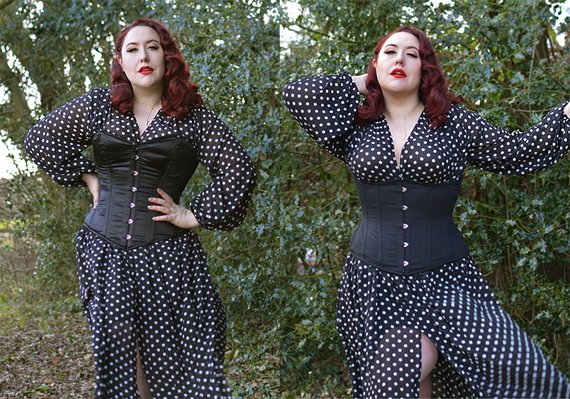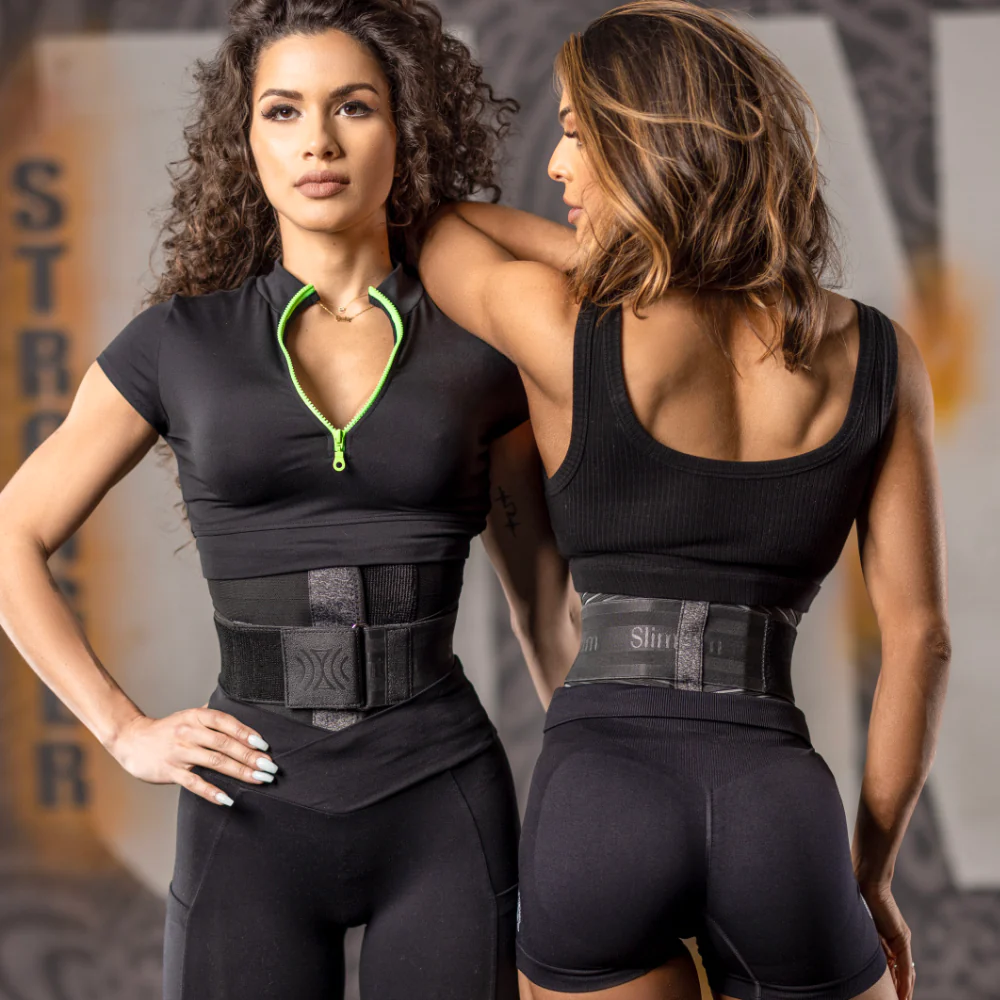Welcome to The Ultimate Guide to Waist Training and Corsetry for Transgender and Crossdressing Individuals! Whether you’re new to the world of waist training or have been experimenting with corsets for a while, this guide is here to help you navigate this exciting journey with confidence and ease.
Purpose of the Guide
Our aim is simple: to provide you with a comprehensive, easy-to-understand resource that will guide you through the essentials of waist training and corsetry. We want you to feel informed and empowered, whether you’re looking to enhance your silhouette, improve your comfort, or explore new fashion styles.
Overview of Waist Training and Corsetry
Waist training involves wearing a corset or waist cincher to achieve a slimmer waist and a more defined hourglass figure. Corsets, with their historical roots in fashion, have evolved to be more comfortable and functional, offering both aesthetic appeal and practical benefits.

In this guide, we’ll cover the basics of how waist training works, the different types of corsets available, and how to choose the right one for your needs.
Benefits for Transgender and Crossdressing Individuals
For many transgender women and crossdressers, waist training and corsetry are key tools for creating a more feminine silhouette. Waist training can help you achieve a smoother, curvier figure, which can enhance your confidence and comfort in clothing. Corsets also provide support and structure, making them a versatile addition to your wardrobe.
Who This Guide Is For
Crossdressers: If you love experimenting with different looks and styles, this guide will help you understand how waist training can enhance your appearance and comfort.

Transgender Women: Whether you’re just starting your transition or you’re looking to refine your style, corsetry and waist training can play a significant role in achieving the figure you desire.
Individuals Interested in Waist Training: If you’re curious about how waist training works and how it can fit into your lifestyle, this guide will give you the insights you need to get started safely and effectively.
Let’s dive into the world of waist training and corsetry together and unlock the secrets to a more confident, stylish you!
Understanding Waist Training
What is Waist Training?
Waist training is a practice that involves wearing a specially designed garment, such as a corset or waist trainer, to shape and cinch the waist over time. This method aims to create a more pronounced hourglass figure by gradually reducing waist size. While it has evolved significantly, waist training has been around for centuries and has become popular among various individuals seeking a specific body shape or contour.
Waist training traces back to the 16th century when corsets became fashionable in Europe. Initially, corsets were made of stiff materials like whalebone and steel to achieve a desired silhouette. Over time, these garments evolved, and today’s waist trainers are often made from flexible materials like latex or neoprene. Historically, corsets were worn to achieve a fashionable shape and were considered a symbol of status and femininity.
How It Works
Waist training works by applying consistent pressure to the waist area, which can gradually compress the waist and reshape the body. By wearing a corset or waist trainer regularly, the body can slowly adapt to a smaller waist size. The garment’s structure supports the lower ribs and compresses the waist, which, over time, can lead to a more defined waistline.
Benefits of Waist Training
Aesthetic Benefits
The primary appeal of waist training is its potential to enhance your appearance. By reducing the waist size, you can achieve a more defined hourglass figure. Many people find that waist training helps their clothing fit better and provides a flattering shape. Whether you’re aiming for a more dramatic transformation or just a subtle adjustment, waist training can offer visible changes in body shape.
Psychological and Emotional Benefits
Beyond the physical changes, waist training can also impact your emotional well-being. For some, the process of waist training can boost confidence and self-esteem. Feeling more comfortable and satisfied with your appearance can positively affect how you see yourself and how you interact with others. Additionally, the ritual of waist training can provide a sense of discipline and commitment to personal goals.
Basic Concepts
Corsets vs. Waist Trainers

Corsets and waist trainers are both used for waist training, but they have distinct differences:
- Corsets: 👉Traditionally made with rigid materials like steel or whalebone, corsets offer a structured support that can significantly alter body shape. They often have laces or hooks to adjust tightness and can provide a dramatic reduction in waist size. Corsets can be worn for special occasions or for long-term waist training, depending on the design.
- Waist Trainers: 👉 Modern waist trainers are usually made from flexible materials like latex or neoprene. They are designed for everyday wear and provide less dramatic shaping compared to traditional corsets. Waist trainers are often preferred for their comfort and ease of use, making them suitable for longer periods of wear.
Differences and Similarities
While both corsets and waist trainers aim to shape the waist, their construction and use differ. Corsets are generally more rigid and offer a more pronounced shaping effect, often used for fashion or special occasions. Waist trainers are more flexible and intended for regular, long-term wear to gradually achieve a slimmer waistline.
In summary, waist training involves using garments to shape and cinch the waist, with both aesthetic and emotional benefits. Understanding the differences between corsets and waist trainers can help you choose the right method for your goals.
Getting Started with Waist Training
Waist training can be an exciting journey towards a more defined silhouette, but getting started can feel a bit overwhelming. In this chapter, we’ll break it down into simple steps so you can find the right waist trainer, ensure it fits perfectly, and set realistic goals for your transformation.
Choosing the Right Waist Trainer
Materials and Construction
When selecting a waist trainer, the materials and construction play a huge role in comfort and effectiveness. Here’s what to look for:
- Steel Boning: 👉This provides firm support and helps shape your waist effectively. It’s more durable than plastic and can last longer.
- Latex or Neoprene: 👉Common materials for waist trainers, these materials are flexible and help with compression. Latex is also more breathable.
- Cotton Lining: 👉For added comfort, especially if you plan to wear your waist trainer for long periods, a soft cotton lining is a great choice.
Sizing and Fit
A well-fitting waist trainer is crucial for both comfort and effectiveness. Here’s how to get it right:
- Measure Your Waist: 👉Use a soft measuring tape to measure around the narrowest part of your waist. Make sure the tape is snug but not tight.
- Check the Size Chart: 👉Different brands have different size charts, so always refer to the specific chart of the brand you’re considering.
- Try It On: 👉Waist trainers should feel snug but not painfully tight. You should be able to breathe comfortably and move around a bit.
Recommendations Based on Body Type
Your body type can affect how a waist trainer fits and works for you. Here are a few tips:
- Hourglass Figures: 👉Look for a waist trainer that enhances your natural curves. A trainer with a curved design can help accentuate your waist.
- Straight Figures: 👉If you have a straighter figure, consider a trainer with more compression to help create curves.
- Plus Size: 👉For those with a fuller figure, ensure the waist trainer offers ample coverage and support. Look for brands that specialize in plus-size options.
How to Measure Yourself

Accurate Measurements for Corsets and Waist Trainers
Getting the right measurements is key to finding a waist trainer that fits well. Follow these steps:
- Waist Measurement:👉 Stand up straight and use a soft measuring tape to measure around your natural waist. This is usually the smallest part of your torso.
- Hip Measurement (if needed): 👉Measure around the fullest part of your hips if the waist trainer extends below the waist.
- Torso Length: 👉Some corsets and trainers come in different lengths. Measure from the top of your chest (just under the armpits) down to your waist to determine if you need a longer or shorter fit.
Setting Realistic Goals
Understanding Body Adjustment
Waist training isn’t an overnight transformation. Your body needs time to adjust. Here’s what to keep in mind:
- Gradual Changes: 👉Start with shorter wearing periods and gradually increase the time as your body becomes accustomed to the trainer.
- Listen to Your Body:👉 If you experience pain or discomfort, it’s essential to take a break. Adjustments are normal, but severe discomfort should be addressed.
Setting Timeframes and Milestones
Setting realistic goals helps keep you motivated. Here’s how to approach it:
- Short-Term Goals: 👉Begin with small milestones, like wearing your waist trainer for an hour a day, then gradually increase the duration.
- Long-Term Goals: 👉Decide on a timeframe for noticeable changes, such as a few months. Remember, results vary from person to person, so be patient and stay consistent.
- Track Progress:👉 Keep a journal or take photos to monitor your progress. Celebrate small victories and adjust your goals as needed.
By following these guidelines, you’ll be well on your way to successful waist training. Remember, it’s all about finding what works best for you and making gradual, sustainable changes. Happy training!
Corsetry Basics
Welcome to the world of corsetry! Whether you’re exploring corsets for the first time or looking to refine your collection, this chapter will walk you through the basics of corsets, including their types, how they work, and how to choose the right one for you.
Types of Corsets

Underbust vs. Overbust
Corsets come in a variety of styles, but the most common types are underbust and overbust corsets.
- Underbust Corsets: 👉These corsets sit below the bust and are great for creating a smooth, streamlined look while allowing you to wear your favorite bras or tops. They’re ideal if you want to accentuate your waist without altering the shape of your bust.
- Overbust Corsets: 👉These extend over the bust and provide more coverage and support. Overbust corsets can also serve as stand-alone tops, making them perfect if you want to emphasize your waist while also offering support and shaping to your bust.
Custom vs. Off-the-Rack
When choosing a corset, you’ll often face the choice between custom-made and off-the-rack options.
- Custom Corsets: 👉These are made specifically for your measurements. A custom corset can provide the best fit and comfort, but they tend to be pricier and require more time to create. If you have unique body measurements or specific needs, a custom corset is a great choice.
- Off-the-Rack Corsets: 👉These are pre-made and available in standard sizes. They’re generally more affordable and readily available. While they might not fit as perfectly as a custom corset, many off-the-rack options can still offer great results with the right size and adjustments.
How Corsets Work
Construction and Components
Corsets are crafted from a combination of fabrics and materials that work together to shape your body. Here’s a quick rundown of the key components:
- Fabric: 👉Corsets can be made from various materials like cotton, satin, leather, or brocade. The choice of fabric affects the comfort, durability, and overall look of the corset.
- Busks:👉 These are the metal closures at the front of the corset that allow you to fasten it securely. They’re typically made of steel or other sturdy materials.
- Steel Bones: 👉 Most corsets feature steel boning, which provides structure and support. This steel can be in the form of vertical or spiral bones, depending on the design and function of the corset.
- Laces: 👉The back of many corsets is laced up, which allows for adjustable tightness. The lacing system helps you achieve the desired level of waist reduction and ensures a snug fit.
How They Shape the Body
Corsets work by creating a more defined waistline and reshaping the torso. When you lace up a corset, the fabric and boning compress your waist and upper abdomen, pulling in excess flesh and smoothing out your silhouette. The result is a more hourglass figure. The amount of shaping depends on the corset’s design and how tightly you lace it.
Choosing the Right Corset
Factors to Consider
When selecting a corset, there are a few important factors to keep in mind:
- Size and Fit: 👉 Measure your waist and bust accurately to ensure you choose the right size. Corsets should fit snugly but not painfully tight. Remember, you want to be able to wear it comfortably for extended periods.
- Purpose: 👉Think about what you need the corset for. Are you looking for everyday wear, a special event, or a piece for performance? Your purpose will influence the style and material you choose.
- Budget: 👉Corsets can range from budget-friendly to high-end. Decide how much you’re willing to spend and look for corsets that fit within your budget while meeting your needs.
Comfort and Style Preferences
Comfort is key when it comes to corsetry. Ensure that the corset you choose doesn’t dig into your skin or cause discomfort. Look for features like padded edges or breathable fabrics if you’re planning to wear it for long periods.
Style is also a personal choice. Corsets come in various designs, from classic Victorian styles to modern, sleek looks. Choose a style that makes you feel confident and aligns with your wardrobe preferences.
With these basics in mind, you’re ready to dive into the world of corsetry with confidence. Whether you’re choosing your first corset or adding to your collection, understanding these fundamental aspects will help you make informed decisions and find the perfect fit for your needs.
Proper Use and Care of Waist Trainers and Corsets
How to Wear a Waist Trainer

Putting It On Correctly
Wearing a waist trainer correctly is key to getting the best results and staying comfortable. Here’s a simple step-by-step guide to help you:
- Choose the Right Size: 👉Make sure your waist trainer fits snugly but isn’t too tight. It should give you a smooth silhouette without causing discomfort.
- Loosen the Laces or Hooks: 👉 Start by loosening any laces or hooks on the waist trainer. This will make it easier to put on.
- Position It Right: 👉Hold the waist trainer around your torso and make sure it sits comfortably under your bust and over your hips.
- Fasten It Securely: 👉Begin fastening from the bottom up, or start with the laces in the middle if your waist trainer has them. Adjust it so it’s tight but still comfortable.
- Check the Fit: 👉After fastening, make sure the waist trainer is evenly adjusted. It should provide support without pinching or restricting your breathing.
How Long to Wear It Each Day
Starting with waist trainers should be gradual. Aim for 2-4 hours a day at first. This helps your body adjust to the new shape without causing discomfort or strain. As you get used to it, you can increase the time, but don’t exceed 8 hours a day. Always listen to your body—if you’re feeling pain or discomfort, take a break.
Caring for Your Waist Trainer
Cleaning and Maintenance
To keep your waist trainer in good shape:
- Hand Wash Only:👉 Use mild soap and cold water. Gently wash it by hand, avoiding any vigorous scrubbing that might damage the fabric.
- Avoid the Dryer: 👉Never put your waist trainer in the dryer. Instead, lay it flat on a towel to air dry. This prevents the fabric from losing its shape and elasticity.
- Spot Clean: 👉For minor stains, spot cleaning with a damp cloth and mild soap is often enough.
Storage Tips
- Keep It Dry: 👉Store your waist trainer in a cool, dry place. Moisture can cause the fabric to break down over time.
- Avoid Direct Sunlight:👉 Sunlight can weaken the material and cause colors to fade. Keep it in a dark or shaded area.
- Use a Garment Bag: 👉If you’re storing your waist trainer for a long time, use a breathable garment bag to protect it from dust and damage.
Common Mistakes to Avoid
Over-Tightening
It’s tempting to pull your waist trainer as tight as it will go, but over-tightening can lead to discomfort, difficulty breathing, and even potential health issues. Always aim for a snug but comfortable fit.
Not Giving Your Body Time to Adjust
Jumping straight into wearing your waist trainer for long periods can be overwhelming for your body. Start slowly, give yourself time to adjust, and gradually increase the duration as you become more comfortable. Your body will thank you for it!
By following these tips on proper use and care, you’ll ensure your waist trainer or corset lasts longer and remains a comfortable and effective part of your wardrobe.
Waist Training Techniques and Tips
Gradual Adjustment
When starting waist training, it’s important to take things slow. Your body needs time to adjust to the new shape, so begin with short periods of wear and gradually increase the time as you get more comfortable. Think of it like easing into a new pair of shoes—you wouldn’t wear them for hours on end right away!
Start with just an hour or two a day and slowly extend the time as your body becomes accustomed to the waist trainer. Pay attention to how you feel and don’t rush the process. If you feel any pain or discomfort, it’s okay to take a break and give your body time to adapt.
Increasing Wear Time Gradually
Building up your wear time gradually helps prevent any potential discomfort and allows your body to adjust smoothly. Start by wearing your waist trainer for short periods—perhaps an hour or two a day. As you get used to it, you can slowly extend this time.
For example, you might begin with wearing it for 2 hours each day for a week. If you’re comfortable, you can add an extra hour every few days. Just remember: the goal is to be comfortable, not to push your limits.
Listening to Your Body
Your body is the best indicator of how well the waist training is going. If you feel sharp pain, discomfort, or unusual symptoms, it’s important to listen to those signals. Waist training should not cause significant pain or breathing difficulties. Adjust the tightness or take a break if you notice any issues.
Make sure to check in with yourself regularly. If something doesn’t feel right, don’t hesitate to adjust your routine or seek advice from someone experienced in waist training.
Maintaining Comfort
Comfort is key to successful waist training. Here are a few tips to keep things comfortable:
- Using Padding and Liners: 👉Adding padding or liners to your waist trainer can help reduce irritation and chafing. They create a buffer between your skin and the trainer, making the experience more pleasant. Look for breathable fabrics and materials that are gentle on your skin.
- Adjusting for Body Changes: 👉As you continue with waist training, your body may change. Make sure to adjust the fit of your waist trainer accordingly. You might need to make it tighter or looser depending on your progress and comfort level.
Integrating Waist Training into Daily Life
Wearing a waist trainer doesn’t mean you have to sacrifice style or comfort in your daily life. Here’s how to seamlessly integrate it into your routine:
- Wearing Waist Trainers with Different Outfits: 👉Waist trainers can be worn with a variety of outfits. Opt for designs that are versatile and can be hidden under clothing, or choose ones that are stylish enough to be shown off. There are options for every occasion, from casual wear to formal events.
- Tips for Daily Wear and Exercise: 👉When incorporating waist training into your daily life, be mindful of how it affects your activities. You can wear your waist trainer while going about your daily tasks, but be careful during high-intensity exercises. Some people find it beneficial to wear it during lower-impact activities or strength training. Always make sure your waist trainer is comfortable and allows for proper movement.
By following these techniques and tips, you’ll be able to enjoy the benefits of waist training while keeping your body comfortable and happy. Remember, gradual adjustments and listening to your body are the keys to a successful and enjoyable waist training experience
Corsetry for Special Occasions
When it comes to special occasions, choosing the right corset can make a huge difference. Whether you’re heading to a glamorous gala or a relaxed gathering, the corset you select should not only complement your outfit but also ensure you’re comfortable and confident. Here’s a simple guide to help you pick the perfect corset for any event.
Choosing Corsets for Events
Formal Events vs. Casual Wear
Formal Events: 👉For a black-tie affair or an elegant wedding, you’ll want a corset that’s both stylish and sophisticated. Opt for materials like silk, satin, or velvet. These fabrics add a touch of luxury and often feature intricate details like embroidery or lace. A corset with a classic design—think smooth lines and a well-structured fit—works best for formal occasions.
Casual Wear: 👉When dressing for a casual event, such as a brunch or a relaxed party, you can afford to be a bit more playful with your corset choice. Look for comfortable, less rigid styles that allow for movement. Cotton or denim corsets can be great choices here. You can also experiment with fun prints and colors to match the laid-back vibe of the event.
Styling Tips
1. Consider the Outfit:👉 Your corset should seamlessly blend with the rest of your attire. If you’re wearing a full-skirted dress, a corset with a longer cut can help shape your waist and enhance the overall silhouette. For a more streamlined look, a shorter corset may be appropriate.
2. Accessories Matter: The right corset can be a statement piece on its own or complement your outfit. For formal events, consider adding a statement necklace or a pair of elegant earrings. For casual wear, you might go with simple accessories or even none at all, letting the corset be the highlight.
3. Color Coordination: 👉Match the color of your corset with your outfit to create a cohesive look. For a classic approach, black, white, or nude corsets are always safe bets. However, don’t shy away from bold colors or patterns if they fit the occasion.
Preparing Your Body
Prepping for a Long Event
1. Break It In: 👉Before wearing your corset for an extended period, spend some time breaking it in. Wear it for short periods around the house to get used to the fit and feel. This helps to ensure that it molds to your body and becomes more comfortable over time.
2. Choose the Right Size:👉 Make sure your corset fits well. It should be snug but not so tight that it’s uncomfortable. If you’re between sizes, it’s usually better to go slightly larger rather than smaller.
3. Stay Hydrated and Eat Light:👉 During long events, staying hydrated is key. Drink plenty of water and eat light, balanced meals to avoid feeling sluggish or uncomfortable.
Ensuring Comfort and Fit
1. Adjust the Laces: 👉Corsets often have laces that you can adjust for a better fit. Make sure the laces are neither too tight nor too loose. The goal is to have a smooth, evenly distributed shape without creating any pressure points.
2. Take Care of Your Skin: 👉Wearing a corset can sometimes cause irritation, especially if it’s worn for a long time. Wear a thin, breathable layer underneath to protect your skin and reduce friction.
3. Know When to Take Breaks:👉 If you’re at an event where you can sit or relax, take short breaks to ease the pressure on your body. Standing or sitting in the same position for too long can become uncomfortable.
With these tips, you’ll be ready to shine at any special occasion, feeling both fabulous and comfortable in your corset. Remember, the key is to choose a style that fits the event and to prepare yourself and your corset for a great experience. Enjoy the occasion and wear your corset with confidence!
Health and Safety Considerations
Waist training and corsetry can be exciting and empowering, but it’s crucial to pay attention to your body’s signals and maintain overall health. Let’s explore how to do just that!
Listening to Your Body
Waist training should feel supportive and comfortable, not painful. If you start to feel discomfort or strain, it’s your body’s way of telling you something might be off. Here’s what to watch for:
- Signs of Discomfort or Harm: 👉If you experience sharp pain, excessive soreness, or difficulty breathing, these are red flags. Corsets should fit snugly but not restrict your breathing or cause significant pain. Discomfort like bruising, numbness, or difficulty moving can also signal that your corset is too tight or improperly fitted.
- When to Seek Medical Advice: 👉If you notice persistent pain, unusual symptoms, or any physical changes that concern you, don’t hesitate to consult a healthcare professional. They can offer advice tailored to your specific needs and ensure you’re on the right track.
Maintaining Physical Health
Waist training isn’t just about looking good; it’s also about staying healthy. Here’s how to balance waist training with your overall well-being:
- Importance of Breaks and Exercise:👉 Wearing a corset for long periods can impact your body’s natural functions, so it’s essential to give yourself regular breaks. Try not to wear your corset all day, every day. Also, incorporating regular exercise into your routine helps maintain muscle strength and flexibility, which supports your waist training goals and overall health.
- Balancing Waist Training with Overall Wellness:👉 Remember, waist training is just one aspect of your wellness journey. Make sure you’re also focusing on nutrition, hydration, and sufficient sleep. A balanced diet and proper hydration support your body’s needs and help you feel your best while waist training.
By paying attention to your body’s signals and incorporating healthy habits into your routine, you can enjoy the benefits of waist training while maintaining your overall well-being. Always listen to your body, and don’t be afraid to make adjustments or seek help when needed.
Psychological and Emotional Aspects
Boosting Confidence
Waist training isn’t just about shaping your body; it’s also about shaping how you feel about yourself. For many people, the changes that come with waist training can lead to a significant boost in self-confidence. When you see the results of your hard work, whether it’s a slimmer waist or a more defined figure, it can feel incredibly empowering. This new look might help you feel more in tune with your gender identity or simply more comfortable in your clothes. It’s like putting on a new suit of confidence every day!
How Waist Training Can Impact Self-Esteem
For many individuals, especially those who are transgender or crossdressing, waist training can be a powerful tool for improving self-esteem. When you wear a corset or use a waist trainer, you might see changes in your body shape that align more closely with your ideal image. This alignment can make you feel more satisfied with your appearance and more confident in social situations. It’s important to remember that self-esteem is deeply personal, and waist training can be a part of a broader journey toward self-acceptance and happiness.
Emotional Adjustment
Coping with Body Image Changes
Emotional adjustment can be one of the trickiest parts of waist training. As your body changes, you might find yourself facing a range of emotions. It’s normal to have moments of doubt or insecurity, especially if the changes aren’t happening as quickly as you’d hoped. The key is to give yourself grace and remember that your journey is unique. Surround yourself with positive affirmations and focus on the progress you’ve made rather than the distance to your goal. Everyone’s experience is different, so be kind to yourself as you navigate these changes.
Support and Community
Finding Support Groups
Finding a supportive community can make a huge difference in your waist training journey. Look for support groups or online communities where you can connect with others who share your experiences. These groups can provide advice, encouragement, and a safe space to share your thoughts and feelings. Many people find that talking to others who understand what they’re going through can make the process feel less isolating and more manageable.
Connecting with Others in the Community
Connecting with others in the transgender and crossdressing communities can also offer a sense of belonging. Whether it’s through local meetups, online forums, or social media groups, being part of a community can help you feel more supported and less alone. Sharing your experiences, challenges, and triumphs with others who understand can be incredibly validating and comforting.
In the end, waist training is not just about physical transformation but also about emotional growth and self-discovery. Embrace the journey, seek out support, and remember that you’re not alone in this process.
Success Stories and Experiences
Waist training and corsetry can be a transformative journey, not just in terms of physical changes but also for personal confidence and self-expression. In this chapter, we’ll explore some inspiring success stories, share real-life transformations, and offer valuable lessons learned from those who have walked this path before.
Before and After Transformations
One of the most powerful ways to understand the impact of waist training is through before-and-after transformations. These stories illustrate the profound changes that can happen over time with dedication and the right approach.
Take Sarah, for example. Before starting her waist training journey, Sarah felt unsure about her body and how to express her gender identity. After consistently wearing her corset and following a balanced regimen, Sarah noticed a significant change not just in her silhouette but in her confidence. Her waist became more defined, and she felt more comfortable in her skin, allowing her to fully embrace her feminine side.
Then there’s Jamie, who initially started waist training out of curiosity. Jamie’s goal was more about exploring new fashion options than dramatic physical changes. However, the process led to unexpected benefits. Over time, Jamie developed a better posture and a more refined waistline, which enhanced their overall look. The experience also brought a sense of empowerment and a deeper connection with their personal style.
Real-life Examples and Testimonials
Hearing from real people can be incredibly motivating. Many individuals share their experiences online, providing insight into how waist training has affected their lives.
One popular testimonial comes from Lucy Corsetry’s website, where various individuals share their before-and-after photos. For instance, some people report a more pronounced hourglass figure and improved posture, while others mention enhanced comfort and self-esteem. These personal accounts highlight that the effects of waist training can vary, but many find the journey rewarding.
Another example is a video series by a well-known transgender vlogger who documents her corsetry journey. She shares her struggles, triumphs, and practical advice, offering a raw and honest look at how waist training can impact one’s life. Her stories resonate with many, showing that while the road can be challenging, the results can be incredibly fulfilling.
Lessons Learned
From these experiences, several key lessons emerge:
- Patience is Key: 👉Transformations take time. Most people see gradual changes rather than overnight results. Consistency and patience are crucial.
- Listen to Your Body:👉 Everyone’s body reacts differently. It’s important to pay attention to how your body responds and adjust your approach accordingly.
- Comfort Matters: 👉While corsets can provide an amazing shape, comfort should never be sacrificed. Finding the right fit and material is essential to avoid discomfort or health issues.
- Confidence Boost:👉 Many people find that the biggest change isn’t just physical. Waist training can lead to improved self-confidence and a stronger connection with one’s gender identity.
Common Experiences and Advice from Others
Common themes among those who have successfully navigated waist training include the importance of self-care and realistic goals. Many recommend starting slowly and gradually increasing corset wear time to avoid overwhelming your body. It’s also helpful to connect with others who share similar experiences, whether through online communities or local support groups.
Advice often includes seeking guidance from professionals or experienced individuals to ensure that you’re using the right techniques and equipment. Investing in a quality corset and understanding proper lacing techniques can make a significant difference in your results and overall comfort.
In summary, the journey of waist training and corsetry can lead to remarkable transformations, both physically and emotionally. By learning from the experiences of others and applying these lessons, you can achieve your desired results and enjoy the process along the way.